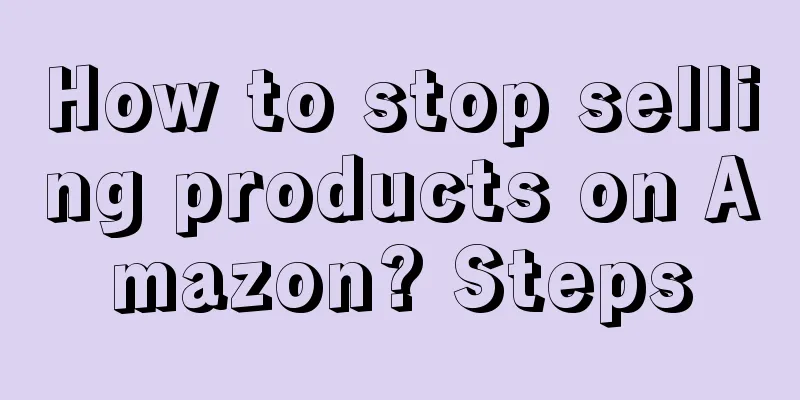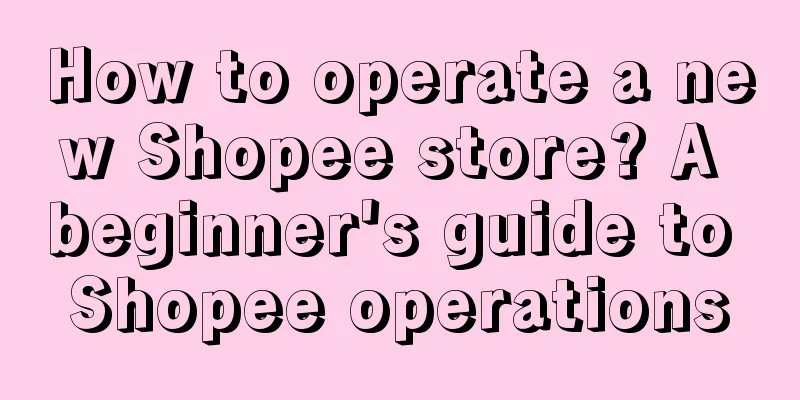How to operate an e-commerce business without supply from Amazon? How to register and open a store on Amazon?

|
As a world-renowned e-commerce platform, Amazon provides sellers with broad sales opportunities. However, some sellers may face the situation of no source of goods, that is, no actual inventory of goods. So, how to operate e-commerce without source of goods on Amazon? This article will explore the practical methods and strategies of no-source e-commerce on Amazon. 1. How to register and open a store on Amazon Before we start discussing the strategy of no-source e-commerce, let’s first understand how to register and open a store on Amazon: Choose the right seller account type: Amazon provides two main types of seller accounts, individual sellers and professional sellers. Choose the right account type based on your sales plan and needs. Register an Amazon seller account: Visit Amazon's Seller Center and follow the steps to register a seller account. Fill in the necessary information such as contact information, store name, etc. Set up shop information: After registration, set up the shop's basic information, including shop name, shop logo, business type, etc. This information will be displayed on the shop page. Add products: After registering your store, you can add products through Amazon Seller Central. If you don’t have actual sources of goods, you can consider choosing a no-source model, i.e. a dropshipping model, so that you can purchase from suppliers after receiving orders. 2. Practical methods of no-source e-commerce For sellers who don’t have actual sources of goods, there are still some ways to achieve sales on Amazon: Consignment sales model: This is a common no-source e-commerce model. After accepting an order, the seller purchases the goods from the supplier or wholesaler and sends the goods directly to the buyer. This avoids inventory pressure and risks. Private label products: If you are able to find a supplier, you can choose to customize private label products. These products will be manufactured by the supplier but can be sold under your brand. This requires some upfront negotiation and cooperation. Partnership: You can work with other sellers who have supply to sell their products on Amazon as a partner. This approach requires building trust and a partnership agreement. Digital goods: If you have certain professional knowledge or skills, you can consider selling digital goods, such as e-books, tutorials, etc. This method does not require actual inventory. Social media promotion: With the help of social media platforms, build a fan base and attract buyers through interaction and content marketing. This can help you attract potential buyers without supply. |
Recommend
How to follow the sale of Wish? Can I follow the sale of Wish?
On the Wish platform, follow-selling is a common s...
Hebei Chemical Plant Becomes TikTok's Top Streamer. What Inspiration Does It Have for To B Enterprises Doing Short Video Marketing?
This article mainly discusses how Donghua Jinlong,...
With one hit drama a year, has Liu Yifei become the favorite of advertisers?
Successful drama marketing is inseparable from the...
Instead of relying on low prices, Xiaohongshu's alternative "head anchor" rises
Li Dan rose to fame through livestreaming on Xiaoh...
No more PPT, a great data analysis report template
In the business world, data analysis reports are a...
JD.com has a hard time dealing with Meituan: a defensive battle doomed to fail?
JD.com has officially entered the food delivery fi...
This is too exciting. This 618 event review report is really great.
How to write an activity review? There are three k...
A refreshing novel was adapted into a mini-program short drama: 100 episodes were shot in 3 days, and 13 million yuan was earned in 45 days
Now, more and more people are flocking to the tren...
Does Shopee's transshipment warehouse need to be changed frequently? What should I pay attention to?
No matter what platform it is, since you open a st...
How can I check the ranking of Wish Store? How long is the store review cycle?
As a world-renowned cross-border e-commerce platfo...
Will Amazon deliver during the Chinese New Year? What should I do if I cannot deliver?
Amazon is now preferred by many merchants because ...
Operational strategy: 8 dimensions that influence content virality
In recent years, we often hear about hot products ...
Party A’s secret weapon: Other brands can also be used
The solution is great, but "other brands can ...
Want to win the battle for overseas traffic? Don’t miss these festivals in December this year!
This article starts from overseas history and cult...
What are the eight Amazon sites? What are their advantages?
Everyone who does Amazon knows that the first site...









